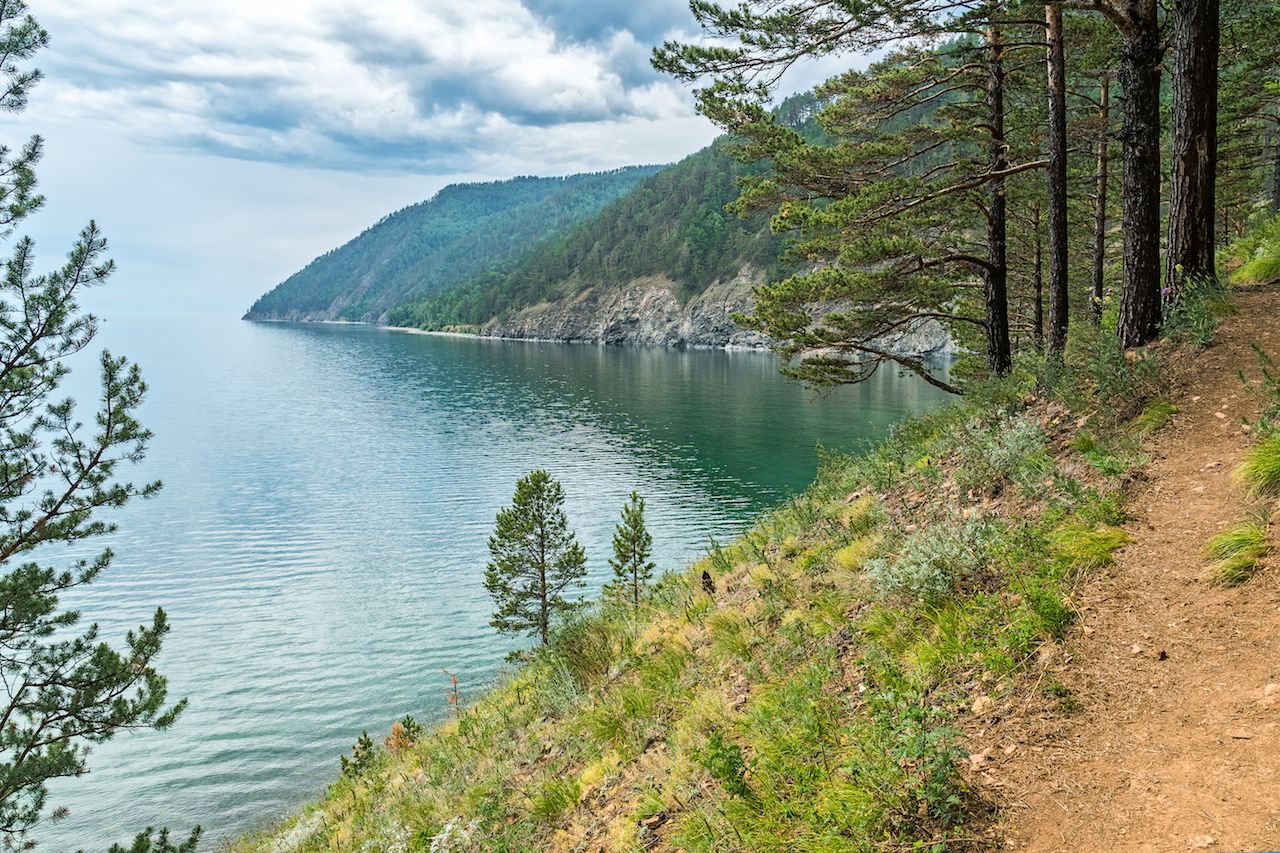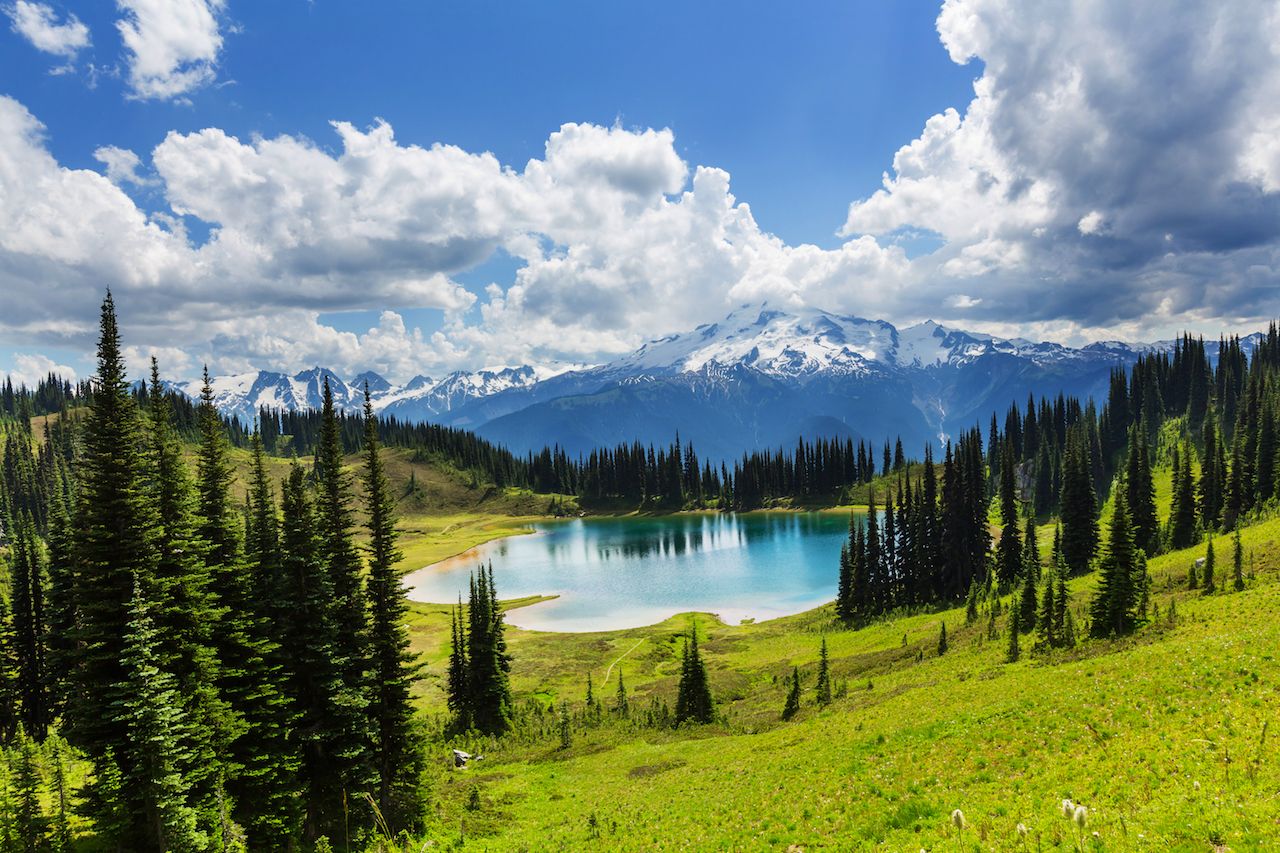This summer, think beyond your local trails and turn backpacking into your main vehicle for adventure. Few things are better than the overwhelming sense of accomplishment after completing a multi-day backpacking trip and hitching a ride into a new town, clothes covered in trail, to find a guesthouse to shower in, or even just arriving back at the trailhead to a cooler stocked with canned beer floating in melted ice and an old pair of flip-flops. Here are seven backpacking trips that offer not only that feeling, but the perfect chance to get away from the crowds and enjoy some solace on the trail. Before heading out on any of these treks, get yourself prepared by checking out our ultimate summer backpacking gear guide to be sure you have the gear situation under control.


The 7 Most Underrated Backpacking Trips You Should Do This Summer
1. Great Baikal Trail, Russia
Length: 31 miles (50 km)
Time: 3 days
Siberia might not be the first place that comes to mind when thinking of trekking. That’s a good thing in this case, as your experience on the Great Baikal Trail will be devoid of touristy day hikers, and there’s a solid chance that once get a few miles out you won’t run into anyone at all. Southern Siberia has a remoteness that is all but lost in the world’s popular trekking regions, and no, it isn’t a freezing, snow-covered tundra.
The biggest draw to the area is Lake Baikal itself, but getting out on the trail provides views and adventure that those staying down at the lake miss out on. The trail takes trekkers up to 2,500 ft in elevation and moves right along the lakefront at other points in the journey. Lake Baikal is the world’s largest freshwater lake by volume, surpassing even the Great Lakes in the northern US. This 3-day trek takes you and your crew to the summit of Mount Listvyanka.
2. Angelus Circuit, New Zealand
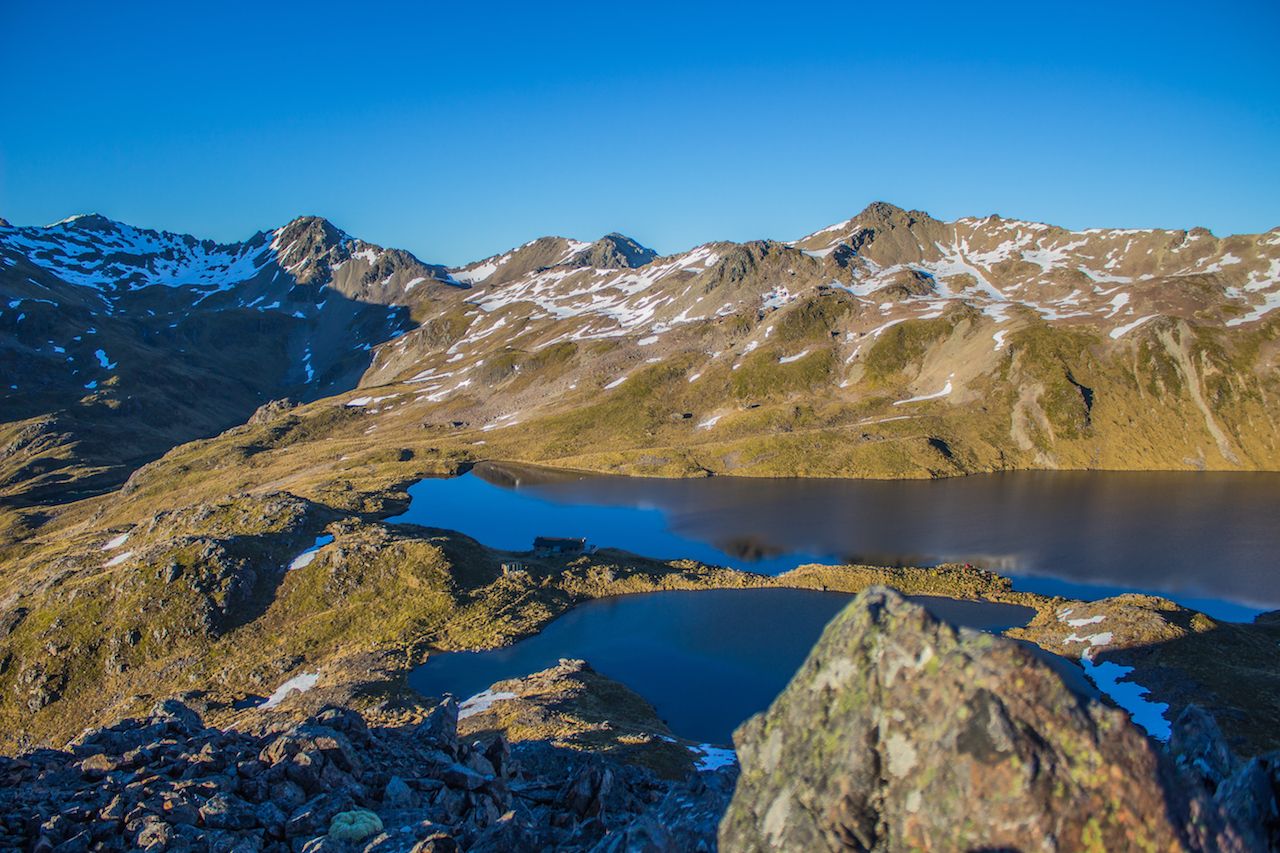
Photo: Viktor Hejna/Shutterstock
Length: 24 miles (39 km)
Time: 2-3 days
Trekking in New Zealand is nothing new, but while so many backpackers head to places like the Abel Tasman Coast Track or the Mueller Hut Route, Angelus Circuit is largely skipped over. At least, by those who don’t do their research. This trek starts just off Lake Rotoiti in Saint Arnaud Village, passes through beech forests like you’ve never seen, and works its way up and over high-altitude ridges offering dramatic valley views as you pass some of New Zealand’s most pristine mountain lakes.
The three days of hiking are relatively free-flowing. There’s ground to be covered but not a huge rush; the second day is typically the biggest haul while the first and final days allow time for preparation or unpacking and getting to and from the trailhead. There are a number of huts along the way for sleeping, but you can also bring your own camping gear and set up a rig.
3. Spider Gap-Buck Creek Pass Loop, Washington, US
Length: 44 miles (71 km)
Time: 5 days
This one keeps you stateside, making it easier to round up your crew without having to plan and book months in advance. Washington’s Glacier Peak Wilderness is home to some of North America’s most rugged backpacking terrain. You’ll cross steep ridges, craggy inclines, and fields of wildflowers. Start from the Phelps Creek Trailhead, where you can park and get yourself ready to hit the trail. The first day is long but rather mellow. Steep inclines don’t happen until day two after you’ve passed through Spider Meadow. The trail eventually meets the Pacific Crest Trail before heading back down on the final section of the loop.
If you want to trim a few miles off this trek, park a second car at the Trinity trailhead, which is just over three miles from Phelps Creek Trailhead, and shuttle yourself back to the original starting point. The Spider Gap-Buck Creek Pass Loop is challenging and at times lightly technical, particularly on the second and third days, but waking up and zipping open your tent anywhere on the trail in the early morning hours is one of those experiences that makes you feel like you’re inside Instagram.
4. Overland Track, Tasmania, Australia
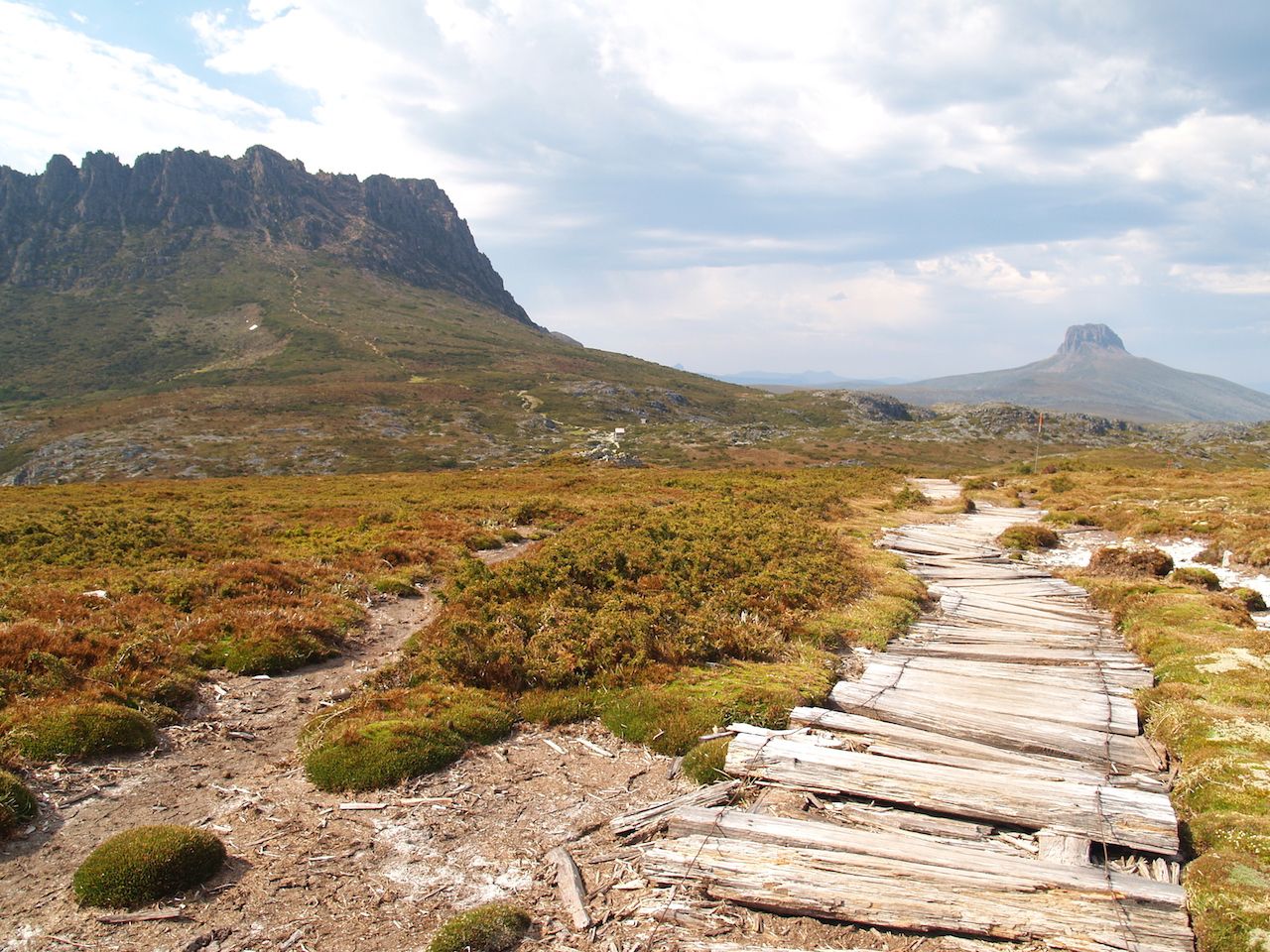
Photo: totajla/Shutterstock
Length: 40 miles (65 km)
Time: 5-6 days
Located in a National Park, this is one of the more popular treks on this list. Still, the fact that it’s in Tasmania and more than a 2-3 day trek means that only dedicated backpackers make the journey, and those that do almost always complete it. You’ll head north to south from Cradle Mountain towards Australia’s deepest all-natural freshwater lake, Lake St. Clair, and head up Cradle Mountain. This trek requires you to book online at least 24 hours in advance, which can be done here, and possess an Australian National Parks Pass.
5. Tiger Leaping Gorge, Yunnan Province, China
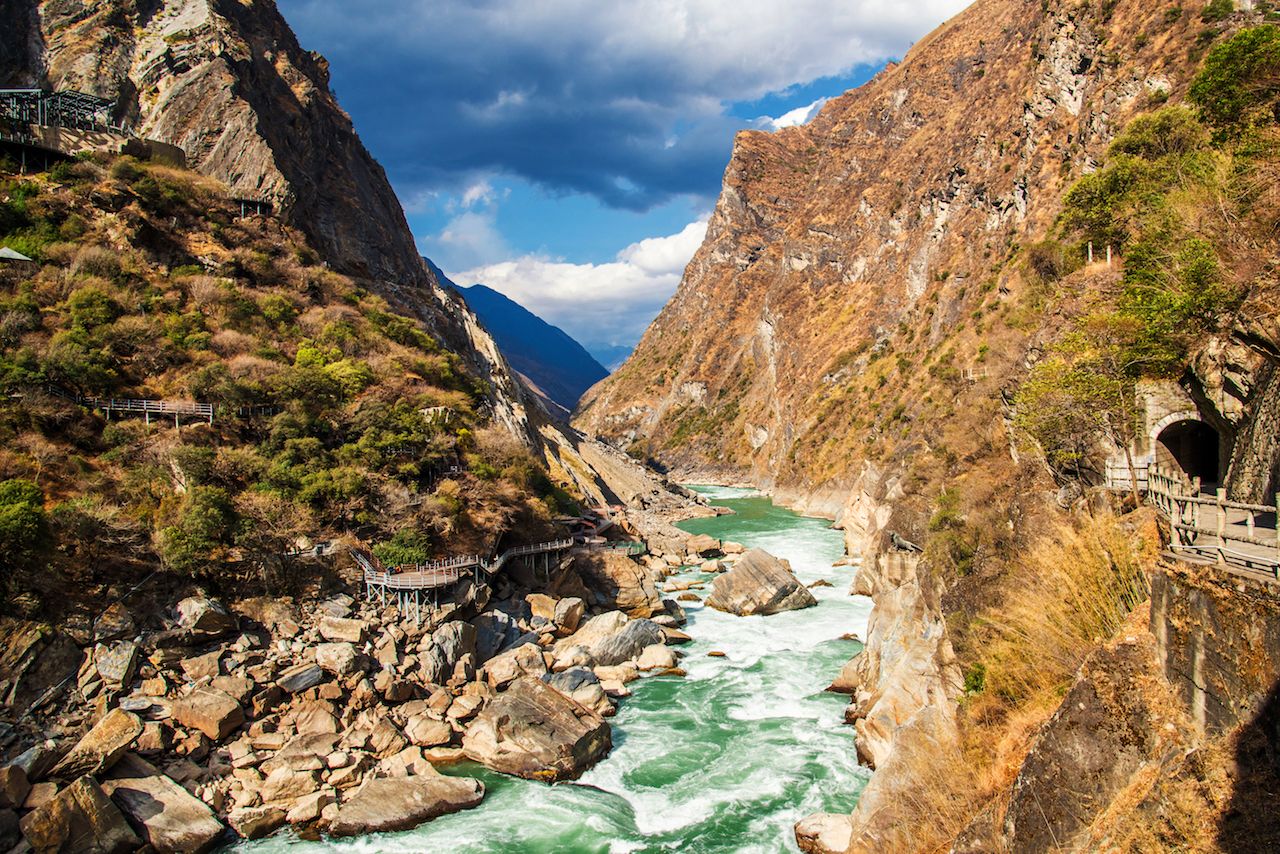
Photo: Martinho Smart/Shutterstock
Length: 10.5 miles (17 km)
Time: 2-3 days
The name stands for exactly what it suggests. Legend has it that a tiger leapt across the Jinsha River, which flows through the gorge, in order to make his escape from a hunter. We don’t encourage trying this yourself, but the trek is a gorgeous journey through the high country of Yunnan Province, not too far from Shangri-La. You’ll have to pay about 65 RMP (just over $10 USD) to enter the park. You might be thinking, “I could hike 10.5 miles in one day!” But, that’s not the case here, thanks to its super steep ascent and descent. The most notorious part of the hike, 28 Bends, is a series of sharp switchbacks up a mountain that can be exhausting even for experienced trekkers. Anyone in your party who can’t hang should be able to hire a donkey to help them with the climb. Spend the nights in gorgeous high-altitude guesthouses.
Prior to departing on the main trek, an optional add-on of about 2.5 miles (4 km) on the Upper Gorge takes you to the Jinsha River and the views are more than worth the extra effort in addition to the traditional trek itself. This portion is located in the same park and the trailhead is easily accessible by car — hitchhike or hire a driver in town.
The gorge wasn’t open to foreign tourists until 1993, meaning you can still be among the first couple generations of visitors to complete the trek. To start the trek, get yourself to the town of Qiaotou. The easiest way to do this is to fly into Lijian and then head to the bus station and take the number 13 bus to Qiaotou. If you can, secure your bus ticket the day before. The trailhead is accessible from town, not from the gorge itself.
6. Mount Rinjani, Indonesia
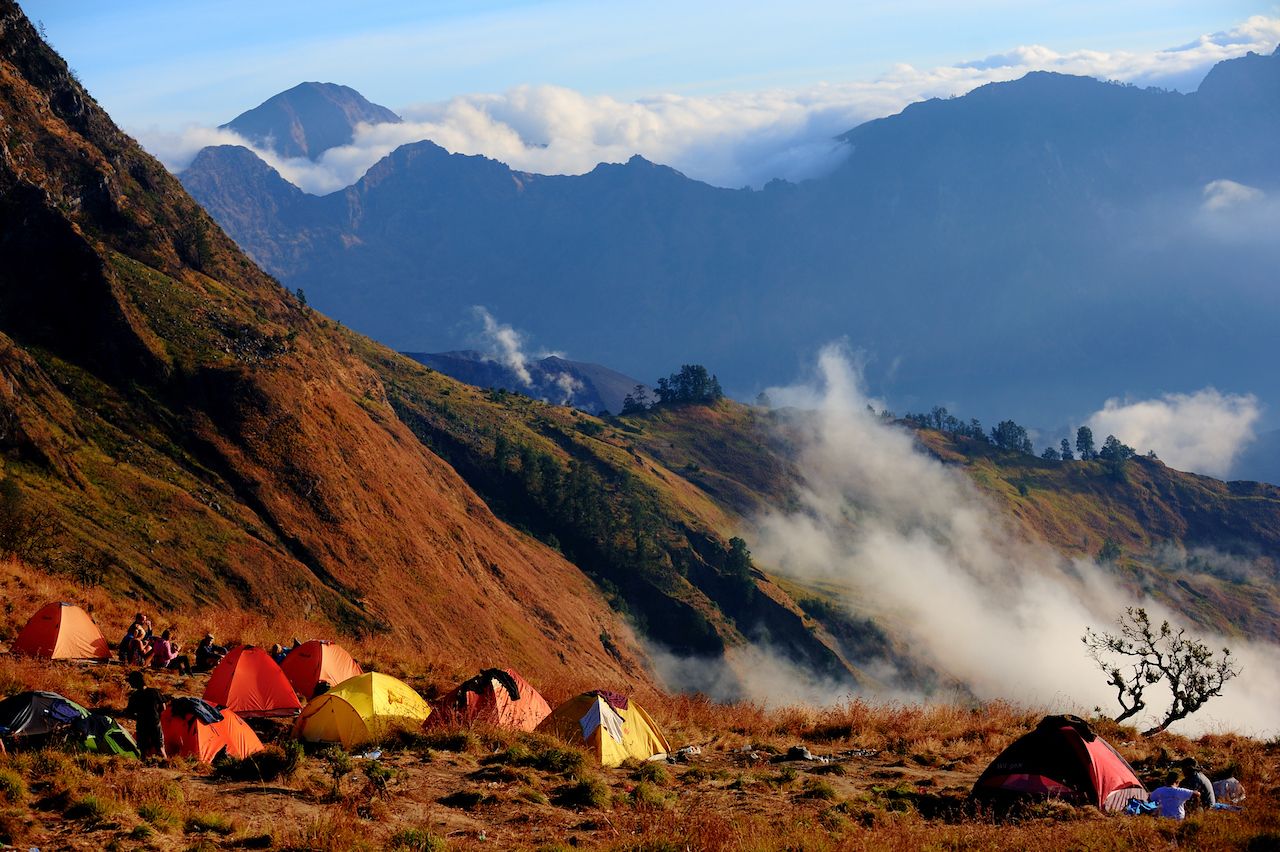
Photo: Jamoo/Shutterstock
Length: 17 miles (27.5 km)
Time: 3 days
Indonesia’s second-highest volcano, Mount Rinjani, is the highest on the island of Lombok at over 1,200 feet. It’s located in Rinjani National Park and accessed either from the village of Sembalun or Senaru. What makes this three-day trek unique is that the second day of hiking begins in the middle of the night and sees trekkers reaching the summit of the volcano shortly before sunrise. This also allows you to start in one town and end in another, instead of climbing down the same way you went up.
The best way to go about this trek is to start in Sembalun and finish on the other side, in Senaru. This direction works best with the layout of the trails and general traffic flow of other trekkers. The hike can be done in two days, with only one night of camping, but for the best experience (and to not rush yourself) allow three days. Syam Trekker is among the top guides for the trek, though many options are available.
7. The Beara Way, Ireland

Photo:
Length: 122 miles (196 km)
Time: 9 days
The Caha Mountains of Ireland are lush, green, and strikingly beautiful — with the added bonus of being far less crowded than the Appalachians or Rocky Mountains in North America or much of the Alps further east in Europe. This long trek is certainly not for the faint of heart. You’ll loop around the entire Beara Peninsula on this long trek, soaking in the views of both Bantry Bay and Kenmare Bay. Along the way, you’ll pass a number of historic archaeological sites and walk the same escape route used by the last chieftain of Beara in the early 1600s as he was raided by the Elizabethans.
The route passes through towns where you can replenish supplies and restock calories with a few pints. If your group is feeling particularly adventurous and has the extra time, the Beara Way is part of the larger Beara-Breifne Way, Ireland’s longest trail. This adds about another 190 miles to the trek — and more than doubles the amount of time needed to complete it. Perfect for the ultimate escapist.
